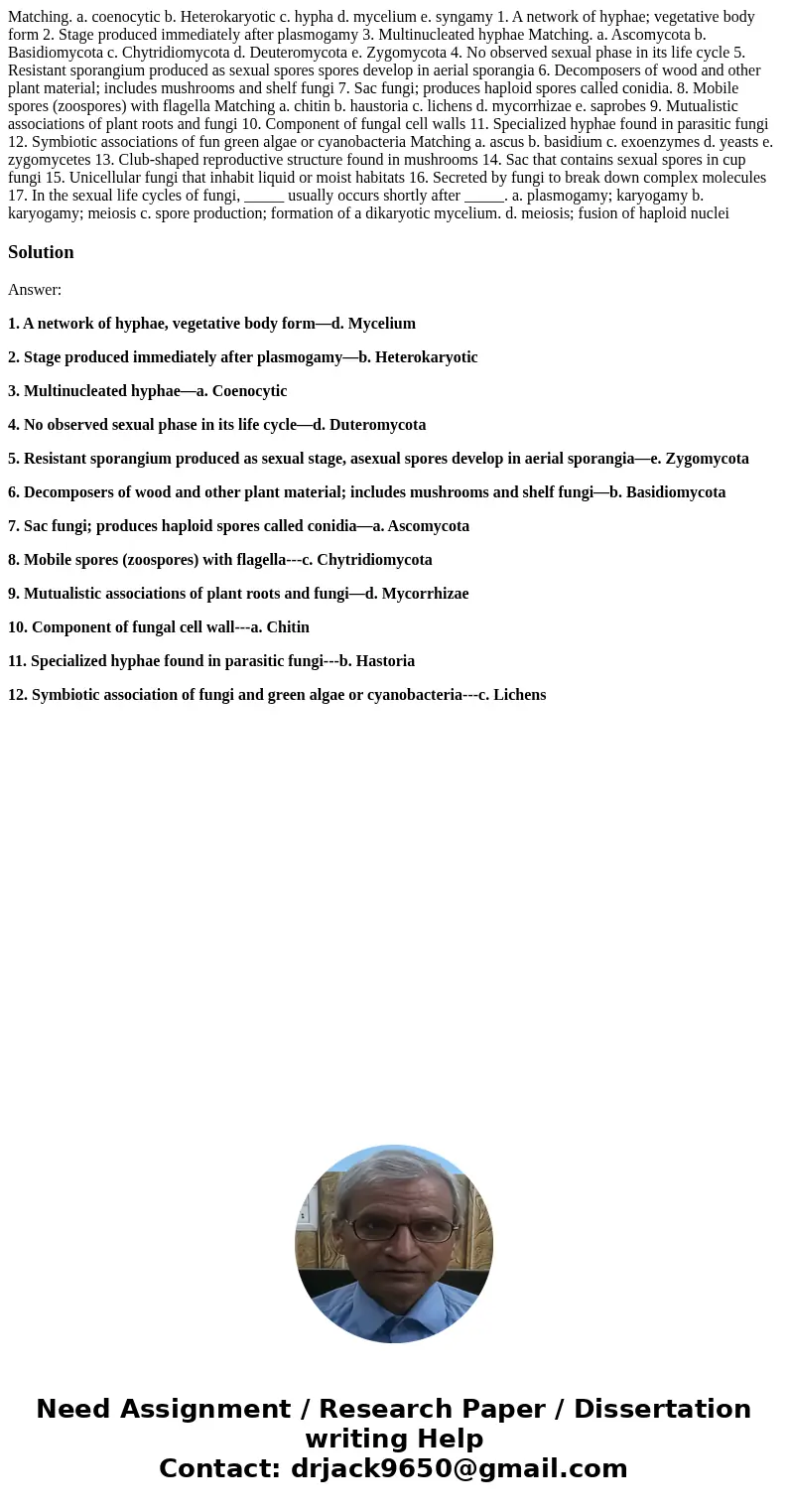Matching. a. coenocytic b. Heterokaryotic c. hypha d. mycelium e. syngamy 1. A network of hyphae; vegetative body form 2. Stage produced immediately after plasmogamy 3. Multinucleated hyphae Matching. a. Ascomycota b. Basidiomycota c. Chytridiomycota d. Deuteromycota e. Zygomycota 4. No observed sexual phase in its life cycle 5. Resistant sporangium produced as sexual spores spores develop in aerial sporangia 6. Decomposers of wood and other plant material; includes mushrooms and shelf fungi 7. Sac fungi; produces haploid spores called conidia. 8. Mobile spores (zoospores) with flagella Matching a. chitin b. haustoria c. lichens d. mycorrhizae e. saprobes 9. Mutualistic associations of plant roots and fungi 10. Component of fungal cell walls 11. Specialized hyphae found in parasitic fungi 12. Symbiotic associations of fun green algae or cyanobacteria Matching a. ascus b. basidium c. exoenzymes d. yeasts e. zygomycetes 13. Club-shaped reproductive structure found in mushrooms 14. Sac that contains sexual spores in cup fungi 15. Unicellular fungi that inhabit liquid or moist habitats 16. Secreted by fungi to break down complex molecules 17. In the sexual life cycles of fungi, _____ usually occurs shortly after _____. a. plasmogamy; karyogamy b. karyogamy; meiosis c. spore production; formation of a dikaryotic mycelium. d. meiosis; fusion of haploid nuclei
Answer:
1. A network of hyphae, vegetative body form—d. Mycelium
2. Stage produced immediately after plasmogamy—b. Heterokaryotic
3. Multinucleated hyphae—a. Coenocytic
4. No observed sexual phase in its life cycle—d. Duteromycota
5. Resistant sporangium produced as sexual stage, asexual spores develop in aerial sporangia—e. Zygomycota
6. Decomposers of wood and other plant material; includes mushrooms and shelf fungi—b. Basidiomycota
7. Sac fungi; produces haploid spores called conidia—a. Ascomycota
8. Mobile spores (zoospores) with flagella---c. Chytridiomycota
9. Mutualistic associations of plant roots and fungi—d. Mycorrhizae
10. Component of fungal cell wall---a. Chitin
11. Specialized hyphae found in parasitic fungi---b. Hastoria
12. Symbiotic association of fungi and green algae or cyanobacteria---c. Lichens

 Homework Sourse
Homework Sourse